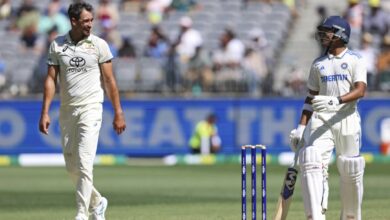How a mother’s failed dream spurred rise of Wayanad as nursery for women’s cricket | Cricket News

It all started on a train trip from Kochi to Kozhikode in early 2000, after K M Elsamma’s daughter Anumol Ba failed a selection trial. On that journey, Elsamma, a physical education teacher in Wayanad, decided to turn the disappointment of the trials into an opportunity, helping shape the drict, Kerala’s popular tour destination, into an unlikely nursery for women’s cricket.Two of Kerala’s three women cricketers to have represented the country are from this remote drict and one of them, all-rounder Sajana Sajeevan, is in the India squad for the Women’s World Cup. As for the state’s women’s team, at any point in time, Wayanad players account for half the team.
“When my daughter failed the trials, Wayanad did not have a drict team. My daughter was a wanderer of sorts, turning up for different dricts, and thus never got a real opportunity to express her skills. So we decided to form a team for our drict,” recollects Elsamma, a just-retired physical education teacher from the Mananthavady Government Vocational Higher Secondary School in Wayanad who once represented her college cricket team.
“I called up the association secretary, Nazar Machan, who readily acknowledged the need for a team. But the bigger challenge was to constitute one. There was just my daughter and her friend. Suddenly I thought, why not do a selection trial among the children in school, even though I knew they rarely played cricket,” says Elsamma.
Wayanad then didn’t possess a decent ground, let alone a turf wicket. Half the year, the drict, comprising largely tribals and migrants from Central Kerala, battled floods and landslides. “Here, people have no time to watch sports. The boys play a little bit of volleyball or football. But the primary ambition is to build a livelihood, business, farming or a government job,” she says. Women are usually married off when they turn 18. Even the last Census of 2011 puts the female literacy rate in the drict at 80.80%, far lower than the state average of 92.07%.
It was to this milieu that Elsamma introduced cricket. There were doubters, but she paid them little attention. She stifles her laughter when she recalls the first trials in the school’s kitchen garden. “Some of them were holding the bat for the first time, some of them had never seen a cricket ball, or even watched a game of cricket. Many didn’t know the rules. I was just looking for physical traits, whether they had hand-eye coordination, good reach and height, a strong physique. Somehow, I chose 14-15 players,” she recounts.
Needless to say, the team lost all the games in the first inter-drict tournament. But the kitchen garden of the school was repurposed into a small cricket ground, Elsamma and her daughter bought a couple of cricketing gears for the school, and evenings in the backyard of the Mananthavady school were filled with squeaky appeals and frantic thuds of leather on wood.
“Still, parents had to be cajoled to send their daughters for tournaments in dant places. But I made them aware of the game’s potential to change their lives. In the early days, we used to meet all their expenses, including buying clothes, as most of them came from humble backgrounds,” she says.
But gradually, as they started winning the odd games – and getting grace marks for exams – more girls came streaming in. Elsamma kept her eyes open for fresh talent.
Minnu Mani, the first woman from Kerala to play for the country, considers Elsamma a mother-like figure (Sportzpics)
It was then that Minnu Mani, the first cricketer from the state to play for the country, walked in. “When I first saw her, she was 12 or 13. She was fully into athletics, like sprinting and throwing. But the moment I saw her, I thought she had the goods to be a cricketer. She was open to it and her parents even more so,” she says.
Minnu considers Elsamma a mother-like figure. “I remember how she literally dragged me to my first selection trials. I was a shy girl then, but she gave me a lot of courage. She took care of me like a mother would,” the cricketer says.
Sajana, too, credits Elsamma for altering her career path. “In my teenage years, I used to play a lot of games and wanted to pursue athletics. But then she saw some spark in me and convinced me to pursue cricket,” she once told this newspaper.
Before Sajana left for the World Cup, she had called Elsamma to seek her blessings. “She asked me if I would watch her games. I told her I have never missed a single game of my students, even if it is telecast on the most random streaming site,” she says.
Last year, she went to Bengaluru to watch Minnu and Sajana playing on opposite sides. Like a mother, she says, she gets tense and nervous. “That’s how mothers are. And to me, every player that I have coached is not a player, but my daughter. That is perhaps the reason parents didn’t hesitate to send them with me to different places,” she says.







